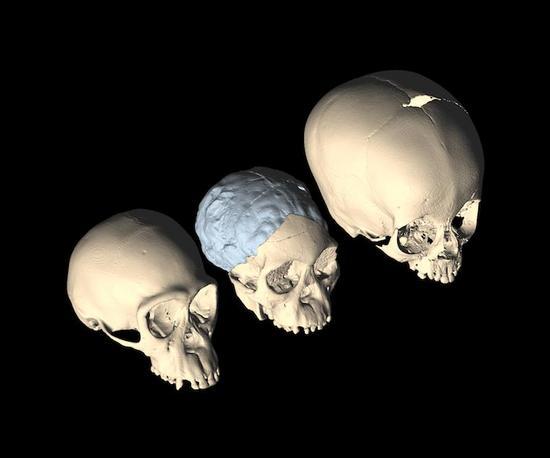We're open daily! View holiday hours
Science News
Baby Brain Evolution
May 10, 2012

Shakira may be right—when it comes to human childbirth, a woman’s hips don’t lie. But neither does a baby’s soft spot.
That soft spot lies on the metopic suture (MS)—an unfused seam in the frontal bone that allows a baby's skull to be pliable during childbirth as it squeezes through the birth canal.
In great apes—gorillas, orangutans and chimpanzees—the MS closes shortly after birth. In humans, it does not fuse until around 2 years of age to accommodate rapid brain growth.
Scientists often thought this split from our primate ancestors happened with the development of our large brains. But a study in this week’s Proceedings of the National Academy of Sciences says that it happened well before that-- perhaps going back to early upright walking.
Anthropologist Dean Falk and her team looked at a 2.5 million-year-old australopithecine fossil—the remains of a child about four years old, known as the Taung fossil. Australopithecines are any species of the extinct genera Australopithecus or Paranthropus that lived in Africa, walked on two legs, and had relatively small brains.
Falk studied CT scans of the Taung fossil endocast and compared it to CT scans of skulls belonging to apes, humans, and other ancient humans. The Taung’s MS was much more similar to modern humans than to the great apes.
“The persistent metopic suture, an advanced trait, probably occurred in conjunction with refining the ability to walk on two legs,” Falk says. “The ability to walk upright caused an obstretric dilemma. Childbirth became more difficult because the shape of the birth canal became constricted while the size of the brain increased. The persistent metopic suture contributes to an evolutionary solution to this dilemma.”
The slow-closing MS in our ancestors might also be the reason our big brains developed in the first place, says Falk. “These findings are significant because they provide a highly plausible explanation as to why the hominin brain might grow larger and more complex.”
CT-based images by M. Ponce de León and Ch. Zollikofer, University of Zurich